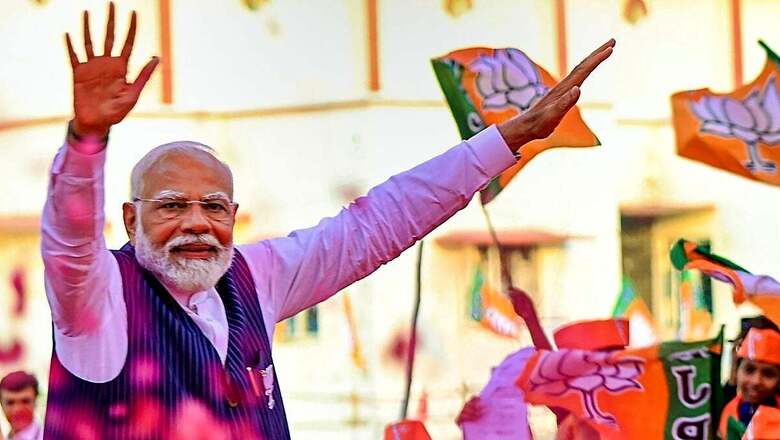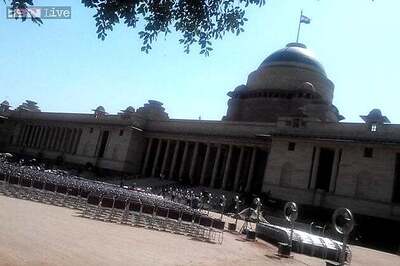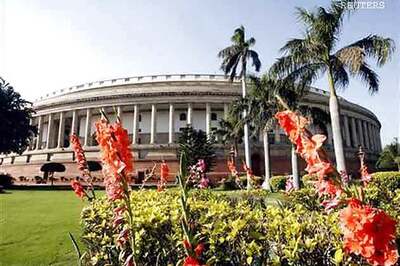
views
Prime Minister Narendra Modi is expected to form a government for a record third term in a row with a comfortable majority after a tumultuous eight-week-long Lok Sabha elections campaign. While Modi 3.0 begins in mid-June, there’s huge interest globally on the agenda for the new government. There’s already some spadework done by the present regime on what would perhaps be rolled out in the first 100 days of the freshly minted National Democratic Alliance (NDA) government.
Once the new government takes charge with a reconstituted team under Prime Minister Modi, political stability at the Centre and 20-odd states ruled by the BJP or its coalition partners is assured. Unlike several countries that are in the midst of wars, conflicts or political instability, Bharat would stand out as a nation of 1.4 billion people to emerge as the global economic powerhouse and a beacon of hope for global communities.
The 8 per cent plus growth coupled with stable interest rates and reined-in inflation levels at 4 per cent will serve as a backdrop for Bharat to emerge as the third largest economy globally, surpassing Germany and Japan. After the US and China, Bharat will emerge as the third largest economy and a hub for agricultural produce, industrial manufacturing, providing services and exporting cost-effective quality goods and services.
In the first three years of Modi’s third term, India will not only be valued as a $5 trillion economy but will be well on its way to increasing its market capitalisation in the global stock market. Both the BSE and NSE have already reported that market capitalisation in Bharat has crossed a whopping $5 trillion, serving as a leading indicator of what’s in store for the economy.
The first big task for the new finance minister to occupy the corner room in North Block would be to present a full regular budget in three months along with a blueprint for making Bharat a developed economy by 2047. Opposition parties, especially the Congress, may have scoffed at the idea of a ‘developed nation’ tag for Bharat, but putting in place nuts and bolts to go big is something inevitable. A commendable job done by Nirmala Sitharaman is what would come in handy for Modi 3.0 while charting its course for attaining the exalted ‘Viksit Bharat’ status, which is both a commitment and conviction for team Modi.
Cash surpluses of over Rs 3 lakh crore, RBI dividend of Rs 2.1 lakh crore and record foreign exchange reserves of $648.7 billion as of May 25 serve as positives for the new government to roll out short-term measures in its long journey to becoming a developed nation. Even if interim budget expenditure projections of Rs 47.65 lakh crore and gross tax collections target of Rs 38.2 lakh crore are retained, borrowings through bonds and bills may be pruned by the third edition of the Modi government.
Alternatively, retaining gross borrowings at Rs 14.13 lakh crore in 2024-25 will provide enough leeway for the new government to introduce new elements to economic expansion and put it on a high growth trajectory of over 10 per cent growth on a continuum for three years.
A focal point of the Modi government’s “New India” campaign may be a Rs 12 lakh crore push for capital spending on infrastructure. This initiative aims to create assets, jobs, services, and opportunities, particularly for the aspirational youth who are supporting the BJP-led NDA in the ongoing Lok Sabha elections.
Sticking to a fiscal prudence strategy that involves reduced fresh borrowings, lower accumulation of debt, and lower interest payments, coupled with a serious recalibration of food, fertiliser, and oil subsidies, may have to continue without any letup. On the parallel, deepening and broad-basing famed growth paradigm with focused development interventions in education, healthcare, housing, water and farm support is what the Narendra Modi government in its new avatar may have to continue.
The real challenge will be to lay a firm foundation for a “New India.” Out-of-the-box thinking could propel diversified economic expansion that is both inclusive and target-oriented. For instance, could the new government establish 20 new growth centres to take India’s economy to the next level? One such centre could be Sandeshkhali in West Bengal’s Sunderbans area.
While Sandeshkhali has unfortunately seen violence and sexual abuse against women, it has the potential to become a hub for women-centric development projects. A program like the ‘Lakhpati Didi’ initiative, for which Finance Minister Nirmala Sitharaman recently announced an enhanced target of 3 crore beneficiaries, could be housed in Sandeshkhali and replicated across India as a model for women’s economic empowerment. Local skills, opportunities and fresh ideas from different states apart from the development of eco-sensitive Sundarbans waterfront can be weaved into this signature project of Prime Minister Modi.
Comprehensive economic uplift projects for tribal communities can be centred in Bastar or Narayanpur in Chhattisgarh where both Left extremism and rampant religious conversion of vulnerable tribal communities happen routinely. Can a growth centre be planned and implemented for fisheries development with coastal Kerala or Andhra Pradesh being its headquarters? Should fisheries be managed and regulated from Delhi? A fresh economic growth model around fisheries and coastal areas development can be evolved to give thrust to these areas. If Hyderabad is developed as a defence technology and original manufacturing hub, can’t ports ports-based economic development model be designed in Odisha?
No new project, scheme or public sector company should be allowed registration in the National Capital Region or the metropolis. To spread development projects throughout India, the government could consider establishing 20 new thematic growth areas. This may require relocating some ministries, departments, state-run companies, and autonomous bodies away from Delhi. Modi’s third term presents an opportunity to design 20 decentralised economic growth centres, each structured with hubs and spokes to support startups and various financial services.
Relocating certain ministries could also be beneficial. For example, why not move the agriculture ministry to a city like Amritsar or Ludhiana? Similarly, wouldn’t it be more effective to manage comprehensive hills development projects out of Uttarakhand or Himachal Pradesh? There’s very little utility in keeping the environment and forest ministry housed in Paryavaran Bhavan, located in the posh Jor Bagh area of New Delhi.
Global expansion of Bharat’s economic interests should be intertwined with our geo-political goals set in the true spirit of ‘Vasudhaiva Kutumbakam’, treating the entire international community as part of one big family. In essence, a big shake-up in economic and development structures is what the doctor prescribes to become a developed Bharat.
The author is Director & Chief Executive, non-partisan think-tank, Centre for Integrated and Holistic Studies based in New Delhi. Views expressed in the above piece are personal and solely that of the author. They do not necessarily reflect News18’s views.




















Comments
0 comment